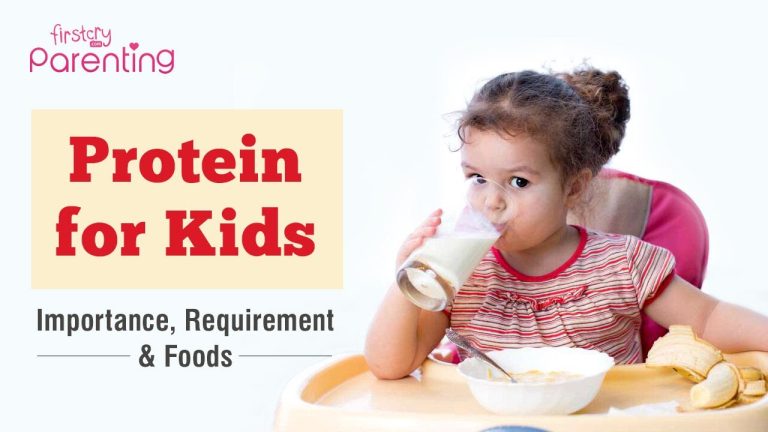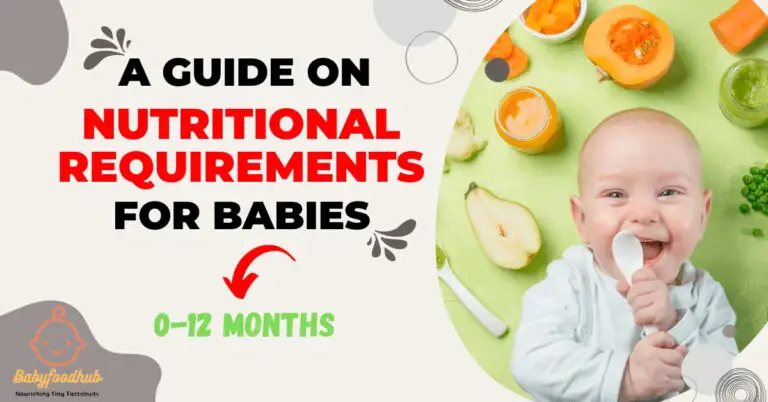which baby food is best to start with?

The best baby food to start with is pureed fruits and vegetables.
Stage 1: Single-Ingredient Purees

Stage 1 of introducing baby food involves single-ingredient purees, which are great for starting solids. These easy-to-digest purees help babies explore new tastes while providing essential nutrients for their development.
So, you’re ready to start introducing solid foods to your baby? Congratulations on reaching this exciting milestone! One popular option to start with is single-ingredient purees. These simple and nutritious baby foods are a great way to introduce your little one to new flavors and textures gradually.
In this section, we’ll explore the nutritional benefits of single-ingredient purees, provide recommendations for introducing them, and offer examples to get you started.
Nutritional Benefits Of Single-Ingredient Purees:
- Variety of nutrients: Single-ingredient purees allow your baby to focus on one specific food source at a time. This way, they can gradually build up their tolerance and taste preferences. Each puree offers a unique set of nutrients, providing a diverse range of vitamins, minerals, and antioxidants.
- Gentle on the stomach: By starting with single-ingredient purees, you can easily identify any potential food allergies or intolerances. This approach helps you introduce new foods cautiously and minimize any discomfort for your little one.
- Digestive development: Single-ingredient purees support healthy digestion and encourage your baby’s natural exploration of different tastes and textures. They also aid in strengthening their oral motor skills and refining their eating abilities.
Recommendations For Introducing Single-Ingredient Purees:
- Start with basic flavors: Begin with mild and easily digestible fruits and vegetables like mashed bananas or steamed sweet potatoes. These simple flavors are more likely to be appealing to your baby and help them develop a positive relationship with food.
- Gradually increase variety: Once your baby has adapted to a few single-ingredient purees, you can start introducing more diverse options. This gradual approach allows their taste buds to develop and reduces the chances of overwhelming or rejecting new foods.
- Observe for reactions: Pay close attention to any signs of allergic reactions or digestive issues when introducing single-ingredient purees. If you notice any adverse reactions, consult your pediatrician immediately.
- Texture progression: As your baby becomes comfortable with single-ingredient purees, you can gradually transition to slightly textured purees or mashed foods. This will help them practice chewing and encourage the development of their oral motor skills.
Examples Of Single-Ingredient Purees:
- Avocado: Rich in healthy fats, avocados provide essential nutrients like potassium, fiber, and vitamin E.
- Sweet potato: Packed with vitamins A and C, as well as dietary fiber, sweet potatoes offer a naturally sweet and creamy option.
- Apple: This classic fruit is a great source of vitamin C and dietary fiber. Cook and puree the apple to make it easier for your baby to digest.
- Carrot: High in beta-carotene, carrots promote healthy eye development and provide a natural sweetness that babies tend to enjoy.
- Banana: Easily digestible and a great source of potassium and vitamin C, bananas are the perfect first food for your little one.
Remember, each baby is unique, and it is important to follow their cues and preferences when introducing solid foods. By starting with single-ingredient purees, you can navigate this new phase of your baby’s feeding journey with confidence and offer them the best start on their path to enjoying a wide and varied diet.
Stage 2: Combination Purees

Stage 2: Combination Purees are a great option for introducing your baby to solid foods. These purees combine different fruits and vegetables to offer a variety of flavors and nutrients, helping to expand your baby’s palate and promote healthy eating habits from an early age.
Transitioning your baby to solid foods is an exciting milestone. As you explore the various options available, combination purees can be a fantastic choice for your little one. These purees combine different fruits, vegetables, and grains to provide a diverse range of flavors and nutrients.
In this section, we will discuss the advantages of combination purees, provide tips for selecting and preparing them, and even share some popular recipes.
Advantages Of Combination Purees For Baby’s Development:
- Introducing a variety of flavors: Combination purees expose your baby to a diverse range of tastes, helping them develop their palate and acceptance of different foods.
- Increased nutritional variety: By combining different ingredients, you can boost the nutritional value of the puree and ensure your baby receives a wide array of essential vitamins and minerals.
- Texture exploration: Combination purees allow your baby to experience different textures, aiding in their sensory development and fostering their ability to chew and swallow more complex foods.
Tips For Selecting And Preparing Combination Purees:
- Choose age-appropriate ingredients: Select fruits, vegetables, and grains that are suitable for your baby’s stage of development. Avoid ingredients that may cause allergies or be difficult to digest at this stage.
- Organic and fresh produce: Opt for organic and fresh ingredients whenever possible to ensure the puree is free from harmful chemicals and provides maximum nutritional benefits.
- Prepare in advance: Make larger batches of combination purees and store them in small containers or ice cube trays, making it easier to serve them as needed.
- Gradual Introduce a new combination of purees slowly to allow your baby’s taste buds to adapt. Combine familiar ingredients with new ones to make the transition smoother.
Popular Combination Puree Recipes:
- Sweet Potato, Spinach, and Apple: Steam sweet potatoes, spinach leaves, and apples until tender. Blend them together for a vibrant, nutritious puree.
- Blueberry, Banana, and Quinoa: Cook quinoa and blend it with ripe bananas and blueberries. The combination of fruits and whole grains adds a delightful taste and texture.
- Carrot, Mango, and Oatmeal: Steam carrots until soft and blend them with ripe mangoes and cooked oatmeal. This tasty puree is packed with vitamins and fiber.
With their combination of flavors, textures, and nutritional benefits, combination purees can enhance your baby’s journey into solid foods. Remember to consult your pediatrician and gradually introduce new foods while monitoring any signs of allergies or intolerance. Enjoy this exciting phase of exploration with your little one!
Stage 3: Mashed And Soft Foods

Stage 3 of introducing solids to your baby is the mashed and soft foods stage. This stage allows for smoother textures and more variety in flavors, helping your baby develop their taste preferences and chewing skills. Start with mashed vegetables and fruits, and gradually introduce meats and grains for a well-rounded diet.
Benefits Of Introducing Mashed And Soft Foods
Mashed and soft foods are an important stage in a baby’s food journey. Here are some benefits of introducing mashed and soft foods:
- Easy to swallow: Mashed and soft foods are gentle on your baby’s developing digestive system, making it easier for them to swallow and digest.
- Texture exploration: These foods allow babies to experience different textures, preparing them for more complex tastes and chewing techniques in the future.
- Nutrient-packed: Mashed and soft foods can be packed with essential nutrients, ensuring your little one receives the necessary vitamins and minerals for healthy growth.
- Enhanced sensory development: The various textures of mashed and soft foods help to stimulate your baby’s sensory development as they explore new tastes and sensations.
Ways To Safely Introduce Textured Foods
Introducing textured foods to your baby’s diet can be an exciting and essential milestone. Here are some ways to safely navigate this stage:
- Start small: Begin by offering small amounts of mashed or soft foods, gradually increasing the quantity as your baby becomes more comfortable.
- Monitor for allergies: Be cautious when introducing new foods and closely observe your baby for any signs of allergies or adverse reactions.
- Choose age-appropriate foods: Opt for foods that are appropriate for your baby’s development, ensuring they are soft and easy to mash or puree.
- Texture progression: Slowly introduce slightly textured foods, allowing your baby to become accustomed to different consistencies and textures.
- Supervised feeding: Always supervise your baby while they eat textured foods to prevent choking hazards and ensure they are consuming at a comfortable pace.
- Offer a variety of flavors: Introduce a range of tastes and flavors to expand your baby’s palate and encourage healthy eating habits.
Nutritious Options For Mashed And Soft Foods
Here are some ideas to nourish your little one:
- Mashed sweet potatoes: Packed with vitamins A and C, sweet potatoes make a delicious and nutritious option for a smooth and creamy puree.
- Avocado: Rich in healthy fats and essential nutrients like potassium, avocados can be mashed to a smooth consistency, providing a creamy and nutritious option.
- Cooked and mashed fruits: Apples, pears, and bananas can be cooked and mashed to create a smooth and sweet puree, offering a variety of flavors and nutrients.
- Steamed vegetables: Carrots, peas, and broccoli can be steamed until soft and easily mashed, providing a nutrient-packed option for your baby.
- Soft-cooked proteins: Chicken, turkey, and fish can be gently cooked and mashed to a suitable texture for your baby, ensuring they receive essential proteins.
Remember, always consult with your pediatrician regarding the introduction of new foods and the specific needs of your baby.
Stage 4: Finger Foods And Self-Feeding

Stage 4 introduces finger foods and self-feeding to your baby’s diet. When it comes to choosing the best baby food to start with, opt for soft and easily chewable options like cooked vegetables, fruits, and well-cooked grains. Introduce one food at a time to observe any adverse reactions and offer a variety of flavors to promote healthy eating habits.
Importance Of Introducing Finger Foods For Motor Skills
Finger foods play a crucial role in the development of your baby’s motor skills. As they explore different textures, shapes, and sizes, they also strengthen their hand-eye coordination and fine motor skills. Here’s why introducing finger foods is essential:
- Encourages self-feeding: Finger foods give your little one the opportunity to practice self-feeding. By grasping and manipulating small pieces of food, they learn how to use their fingers and improve their dexterity.
- Stimulates sensory development: Finger foods allow babies to engage their senses through touch, taste, and smell. The varied textures and flavors help them develop a more adventurous palate and enhance their sensory perception.
- Builds oral motor skills: By chewing and gnawing on finger foods, babies exercise their oral muscles, promoting the development of speech and swallowing skills.
- Enhances independence and confidence: Allowing your baby to feed themselves with finger foods fosters a sense of independence and boosts their self-confidence. It’s a small step towards self-sufficiency that empowers them to explore their food choices.
Appropriate Finger Foods For Your Baby’s Age
When introducing finger foods, it’s crucial to choose age-appropriate options that suit your baby’s developmental stage. Here are some guidelines to consider:
- 6 to 8 months: Begin with soft, easily mashed foods such as ripe avocado, steamed carrot sticks, or well-cooked sweet potato chunks. These foods help your baby practice their pincer grasp and introduce them to new tastes and textures gradually.
- 8 to 10 months: As your baby’s chewing skills develop, you can introduce slightly firmer foods. Examples include cooked pasta spirals, small portions of soft fruits like banana slices or berries, and well-cooked grains like quinoa or couscous.
- 10 to 12 months: At this stage, your baby can handle a wider range of finger foods. Offer bite-sized pieces of steamed vegetables, cooked chicken or turkey strips, toast fingers with nut butter, or chunks of cheese. Introduce new foods gradually and watch for any signs of allergies or choking hazards.
Nutrient-Rich Finger Food Ideas
Introducing nutrient-rich finger foods ensures that your baby receives essential vitamins and minerals while exploring different textures and flavors. Here are some ideas to consider:
- Steamed broccoli florets: Packed with calcium, vitamin C, and fiber, broccoli offers a mild taste and a satisfying crunch for your baby to munch on.
- Soft-cooked diced apples: A great source of fiber and vitamin C, apples make a nutritious finger food option. Ensure the pieces are soft and cut into small, manageable sizes.
- Cooked salmon flakes: Rich in omega-3 fatty acids, protein, and vitamin D, cooked salmon offers a delicate taste and a soft texture that melts in your baby’s mouth.
- Mashed sweet potatoes: A nutrient-dense choice, sweet potatoes are rich in vitamin A, potassium, and fiber. Mash them into soft, easily grabbed portions for your baby to enjoy.
- Quinoa bites: These protein-packed grains are easy for little fingers to grasp and provide essential nutrients like iron, magnesium, and fiber.
Remember, it’s always essential to consult your pediatrician before introducing new foods to ensure they are suitable for your baby’s individual needs and any potential allergies. Enjoy watching your little one explore new flavors and develop important motor skills through the world of finger foods!
Nutritional Content
Discover the best baby food options to introduce your little one to solid foods. Learn about their nutritional content to make the healthiest choice for your baby’s development.
Starting solid foods is an exciting milestone for both parents and babies. As you embark on this new journey, understanding the nutritional content of baby food becomes essential to ensure your little one receives the necessary nutrients for healthy growth and development.
Reading labels for nutritional information and taking into consideration any specialized dietary needs can help you make informed choices. Let’s explore the importance of key nutrients in a baby’s diet, as well as tips for reading labels and understanding nutrient considerations for specialized diets.
Importance Of Key Nutrients In Baby’s Diet:
- Protein: Essential for growth and repair of body tissues. Opt for baby foods that contain a good source of protein, such as pureed meat, fish, or legumes.
- Iron: Crucial for the production of red blood cells. Look for iron-fortified baby cereals, pureed meat, or iron-rich fruits and vegetables like spinach or prunes.
- Calcium: Vital for strong bones and teeth. Choose calcium-rich options like yogurt or pureed cheese along with other dairy products suitable for babies.
- Vitamin C: Helps with immune function and iron absorption. Citrus fruits, strawberries, or pureed vegetables like broccoli are excellent sources of vitamin C.
- Vitamin A: Important for vision and skin health. Sweet potatoes, carrots, and winter squash are great natural sources of vitamin A.
- Omega-3 fatty acids: Support brain and eye development. Seek out baby foods containing fatty fish like salmon or pureed chia seeds.
Reading Labels For Nutritional Information:
When selecting baby food, understanding how to read labels is crucial in ensuring you choose the most nutritious options. Here’s what to look for:
- Ingredients list: Check for whole, recognizable ingredients without unnecessary additives or preservatives.
- Nutrition facts: Look for key nutrients like protein, iron, calcium, and vitamins. Opt for options that provide a good balance of these essential nutrients.
- Allergen information: Be aware of any common allergens (e.g., dairy, soy, gluten) that may cause adverse reactions in your baby.
Nutrient Considerations For Specialized Diets:
Babies with specialized dietary needs require additional attention to their nutrient intake. Consider the following factors:
- Food allergies or intolerances: If your baby has allergies or intolerances, carefully read labels to avoid potential triggers. Consult with a healthcare professional or a registered dietitian for guidance on suitable alternatives.
- Vegetarian or vegan diets: It’s important to ensure that babies on vegetarian or vegan diets receive adequate protein, iron, calcium, and vitamin B12 from plant-based sources. Legumes, tofu, fortified cereals, and green leafy vegetables can help meet these needs.
- Gluten-free diets: For babies with celiac disease or gluten sensitivity, opt for gluten-free grains like rice, quinoa, or certified gluten-free oats.
- Lactose intolerance: If your baby is lactose intolerant, select lactose-free or plant-based alternatives to ensure sufficient calcium intake.
By considering the importance of key nutrients, reading labels for nutritional information, and understanding nutrient considerations for specialized diets, you can make informed choices when introducing solid foods to your baby. Remember, consulting with a healthcare professional or a registered dietitian is always recommended to ensure your little one’s specific nutritional needs are met.
Allergenic Potential
Choose baby foods with low allergenic potential to start with. They are less likely to cause allergic reactions, ensuring a safe and healthy introduction to solid foods for your little one.
When it comes to introducing solid foods to your baby, it’s important to consider the potential allergenicity of certain foods. Some babies may have a higher risk of developing food allergies, while others may not. Understanding common allergens and when to introduce them, as well as guidelines for safely introducing allergenic foods can help you make informed decisions about your baby’s diet.
It’s important to be aware of the signs of allergic reactions in babies to ensure their safety and well-being.
Common Allergens And When To Introduce Them:
- Cow’s Milk: It is recommended to wait until your baby is at least one year old before introducing cow’s milk. This is because cow’s milk contains proteins that can be difficult for babies to digest, potentially causing allergic reactions.
- Eggs: Eggs are a common allergen, and it is advised to wait until your baby is at least six months old before introducing them. Start with well-cooked and mashed eggs to minimize the risk of allergies.
- Peanuts and nuts: Introducing peanuts and nuts early on can actually reduce the risk of allergies. However, it is best to consult with your pediatrician before introducing these allergens, especially if there is a family history of nut allergies.
- Wheat: Wheat is commonly found in baby cereals and can be introduced between four to six months of age. However, if there is a family history of wheat allergies, it is recommended to consult with your pediatrician before introducing it.
- Fish and shellfish: It is advisable to wait until your baby is at least one year old before introducing fish and shellfish due to their potential allergenicity.
Guidelines For Introducing Allergenic Foods Safely:
- Start with single-ingredient foods: When introducing allergenic foods, it is best to start with single-ingredient foods. This makes it easier to identify and address any potential allergic reactions.
- Introduce new foods one at a time: Introduce new allergenic foods one at a time, with a few days in between each introduction. This allows you to monitor your baby for any signs of allergic reactions.
- Offer in small quantities: It’s a good idea to offer small quantities of allergenic foods initially to observe your baby’s response. Gradually increase the amount as your baby tolerates the food well.
- Observe for signs of allergic reactions: Keep a close eye on your baby for any signs of allergic reactions, such as rash, hives, wheezing, vomiting, or diarrhea. If you notice any of these symptoms, stop offering the suspected food and consult a healthcare professional.
Signs Of Allergic Reactions In Babies:
Signs of allergic reactions in babies can vary and may include:
- Skin reactions: Rash, hives, eczema, or swelling of the face, lips, or tongue.
- Gastrointestinal symptoms: Vomiting, diarrhea, or abdominal pain.
- Respiratory symptoms: Wheezing, coughing, or difficulty breathing.
- General discomfort or irritability.
Remember, each baby is unique, and their reactions to allergenic foods can differ. By following these guidelines and being vigilant for any signs of allergies, you can help ensure the introduction of solid foods is a safe and positive experience for your little one.
Organic Vs. Conventional Baby Foods
When introducing solid foods to your baby, it can be overwhelming to choose between organic and conventional options. Learn about the benefits and considerations of both to make an informed decision for your little one’s health.
Are you a new parent wondering which baby food is best to start with? One common dilemma parents face is choosing between organic and conventional baby foods. In this section, we will delve into the differences between the two options, highlighting the understanding of organic certification and its benefits.
We will also discuss the potential advantages and disadvantages of organic baby foods. Finally, we will provide some useful tips for selecting between organic and conventional options.
Understanding Organic Certification And Benefits:
- Organic certification ensures that baby foods are produced using strict agricultural and processing standards.
- The use of synthetic pesticides, fertilizers, GMOs, and irradiation is prohibited in organic baby foods.
- Organic baby foods are free from artificial additives, colors, and preservatives.
- Choosing organic can contribute to a cleaner and more sustainable environment.
Potential Advantages And Disadvantages Of Organic Baby Foods:
Advantages:
- Organic baby foods are believed to have higher nutritional value due to the absence of pesticides and other chemicals.
- They may have a purer taste, allowing babies to develop a preference for natural flavors.
- Choosing organic supports environmentally friendly farming practices.
Disadvantages:
- Organic baby foods are often more expensive than conventional options.
- Availability may vary, especially in certain regions or specific flavors.
Tips For Selecting Organic Or Conventional Options:
- Consider your personal beliefs and values regarding organic farming and sustainability.
- Check for organic certification labels on the packaging to ensure the product meets organic standards.
- Read the ingredient list to avoid any potential allergens or additives.
- Research and compare different brands to find the one that aligns with your preferences and quality expectations.
Remember, ultimately, the decision between organic and conventional baby foods is a personal choice. It’s important to consider the potential benefits and disadvantages while keeping in mind your baby’s health and your own values.

Frequently Asked Questions For Which Baby Food Is Best To Start With?
What Baby Food Should I Introduce First?
Start with single grain cereals like rice or oatmeal followed by pureed fruits and vegetables.
Which Is The Best Baby Food For 6 Month Old?
The best baby food for a 6-month-old is pureed fruits and vegetables.
What Vegetables Should I Start My Baby On First?
The best vegetables to start your baby on first are pureed carrots, peas, sweet potatoes, and butternut squash.
What Is The Best Food For Newborns And Infants?
The best food for newborns and infants is breast milk, as it provides essential nutrients for their growth and development.
Conclusion
After considering all the factors, it’s clear that there is no one-size-fits-all answer to the question of which baby food is best to start with. Each baby is unique and may have different preferences and needs. However, it is generally recommended to begin with single-ingredient purees such as mashed bananas or steamed sweet potatoes.
These foods are easy to digest and less likely to cause allergies or a negative reaction. As your baby gets older and develops a taste for different flavors, you can slowly introduce a variety of fruits, vegetables, and proteins. Remember to follow your baby’s cues and introduce new foods one at a time to monitor for any adverse reactions.
It’s essential to prioritize nutrient-dense options and consult with your pediatrician for guidance. Ultimately, choosing the best baby food to start with is a personal decision based on your baby’s needs, preferences, and any specific dietary considerations. As a parent, trust your instincts and enjoy the journey of introducing your little one to the exciting world of food.






